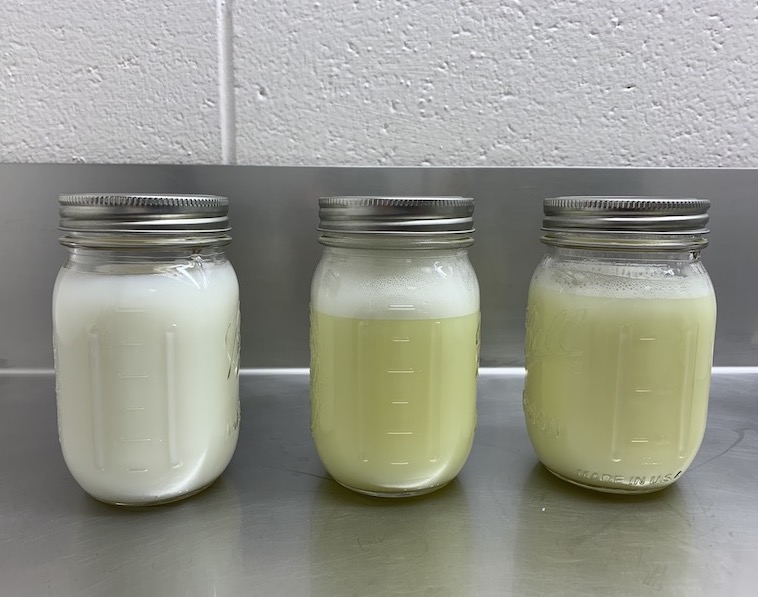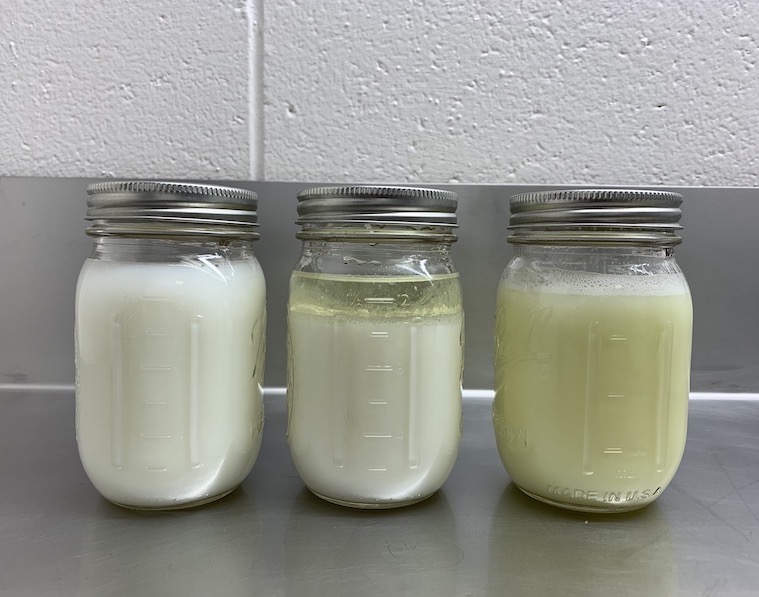By Ben Pease, Nick Christians, Ph.D., and Adam Thoms, Ph.D.
From the previous article (in April SportsField Management), we see that tank mixing is a common practice in all aspects of turfgrass management with many benefits: apply multiple chemistries at once; improve the spectrum of pest/disease control; make time-sensitive applications, and, of course, save time and money through reduced labor costs, equipment wear and fuel usage. Tank mixing is much more than just throwing all of your products in your spray tank at once. Proper tank mixing is important because product-mixing order can affect product efficacy, impact turfgrass health, and help avoid costly/timely product incompatibilities.
When preparing a tank mixture, we should be mindful of the following considerations: Are you using a new product? Are you using a different formulation than usual? Has your water source changed? Have you made any equipment changes or upgrades? These questions and more are a concern because changes or additions to a tank mix could lead to issues known as physical and chemical incompatibilities.
Incompatibilities occur when one product interacts (negatively) with another product in the tank mixture. These interactions, also known as synergism, are an interaction of two or more substances to produce an effect greater than the sum of their separate effects. In the case of an incompatibility, this synergistic effect is detrimental to the tank mixture and/or turfgrass health. Indicators of a physical incompatibility (or synergism) are layering in the tank, excessive foaming, formation of oily residues, or products that will not dissolve or suspend in solution, usually causing precipitation of products or formation of gel-like solution in the tank or hoses. Indicators of a chemical incompatibility (or synergism) are more difficult to recognize. Unlike the visual indicators of a physical incompatibility, a tank mixture with a chemical incompatibility may look normal. Often the symptoms are not evident until hours or days after a spray application, manifesting as turfgrass injury (phytotoxicity) or reduced product efficacy. Did you notice reduced disease or weed control? Tip burn or total injury? This is likely due to chemical incompatibility, often caused by incorrect use (or non-use) of a surfactant. In cases like this, it is important to check the label for surfactant requirements or environmental factor limitations. It is also important to avoid tank mixing root-uptake chemistries (need to be watered-in) with foliar-uptake chemistries.
We can take steps to avoid tank mixture incompatibilities. The first step is always to check the product label. Likely, the label will list products that are compatible and incompatible with the product in question. Of course, it can never be an exhaustive list, so there may also be instructions for performing a jar test. A jar test is a way to test new products within a tank mixture for compatibility issues, but is done on a very small scale. Rather than risking an entire tank mix of expensive product, this uses fractions of ounces (oz.) of products. Many labels give you specific mix amounts for conducting a jar test, but, if not, let’s examine the math involved. If you have a 300-gallon tank and spray at 40 gallons per acre, your tank covers:

If the product you’re testing has an application rate of 64 ounces per acre:

You need 480 oz. of product per tank. To calculate the ounces required for a jar test, we set up a proportion just as we did during sprayer calibration, followed by cross multiplication and division:

This is assuming a 1-quart (16 ounces or 0.125 gallons) container. You will need 0.2 oz. (or 5.9 ml) of product to mimic what would be in a full tank mix. Aside from performing a jar test, tank mixture steps and order of product addition play a large role in avoiding incompatibilities.

Photos by Ben Pease
As was mentioned previously, reading the product label is the first step. The second step is to add at least 50% of the required total water volume to the spray tank. Third, begin agitation and then start adding products, one at a time, into the tank based on the product’s formulation (more on this later). Fourth, wait a few minutes between each product addition to allow for complete dissolution. (Full disclosure: I had previously been guilty of skipping this little-known step.) Fifth, once all products have been added and bottle rinsate put into the tank, add the remaining amount of water to the tank. Finally, measure the pH and hardness of the tank mixture, adding adjusters/conditioners and defoamers as necessary.
Correct product mixing order based on product formulation is key for avoiding incompatibilities. There are various acronyms (AWAMLES, WALES, etc.) to guide the process but it is best to use a more comprehensive formulation type list:
- Water soluble packets
- Dry formulations: soluble granules (SG), water dispersible granules (WDG or WG), and wettable powders (WP)
- Ammonium sulfate and dry/solid anti-drift agents and compatibility agents
- Dispersed liquid formulations: micro-capsules (CS), emulsions in water (EW), flowables (F or FL), suspension concentrates (SC), and suspo-emulsions (SE)
- Liquid drift retardants: important to add before EC formulations
- Other liquid formulations: emulsifiable concentrates (EC), oil dispersions (OD), solutions (S), and soluble liquids (SL)
- Adjuvants: crop-oil concentrates, methylated seed oils, nonionic surfactants, and spreader-stickers
Liquid fertilizers and micronutrients
Wrap up your tank mixing order with the remaining necessary amount of water and any defoamers. Adding products in this order will avoid many of the known product incompatibilities, such as adding an emulsifiable concentrate (EC) before a dry formulation product. Proper tank mixing order is necessary to avoid the time-consuming, and potentially expensive, pitfalls of product incompatibilities such as sedimentation, separation, and filter/hose/nozzle clogging. In extreme cases, a compromised tank mixture cannot be sprayed and will have to be disposed of properly.
Let’s now return to the tank mix example from the previous article. It was calculated that we would need 41.4 gallons of liquid fertilizer, 5 quarts of an EC herbicide, and 7.5 pounds of a WP insecticide. Now that we know the correct mixing order by formulation, we see that this list is in opposite order from being correct. If this list were handed to an unknowing assistant or spray technician, compatibility issues could arise from adding an EC formulation before a WP formulation, or from adding the liquid fertilizer first. The correct mixing order for this tank mix should be:
- 50 gallons of water (it was a 100 gallon tank in the example)
- 7.5 pounds of WP insecticide
- 5 quarts of EC herbicide
- 41.4 gallons of liquid fertilizer
- The remaining ~7.25 gallons of water, plus antifoamer if necessary
Tank mixtures are an important part of any turfgrass management plan. They allow for increased flexibility in daily task management and improve overall turfgrass quality through timely and efficient product application. Following these simple tank-mixing steps ensure that tank mixtures will continue to be an effective turfgrass management tool.
Ben Pease is a Ph.D. candidate and turfgrass research scientist at Iowa State University. He received his undergradate and graduate degrees from the University of Wisconsin-Madison. Prior to returning to school, Pease spent six years as an assistant golf course superintendent. His research has focused on bentgrass shade tolerance, Kentucky bluegrass traffic tolerance, and compost use during establishment.
Nick Christians, Ph.D., is a university professor of horticulture at Iowa State University. His specialization is turfgrass science. He is the author of more than 1,200 articles and research papers related to turfgrass management.
Adam Thoms, Ph.D., is assistant professor specializing in commercial turfgrass management, Iowa State University, Department of Horticulture, Ames, Iowa.
Sources
ADAMA. 2019. Correct mixing order chart. https://www.adama.com/documents/1313470/4533886/ADAMA_NZ_Mixing_chart_Jan2019.pdf/e5e9e286-48cd-483c-8ea1-a437211e3ea4. Accessed 1 Mar 2021
Manuchehri, M.R. 2018. Herbicide mixing order. Oklahoma State University Cooperative Extension Service PSS-2789.
Poindexter, S. 2013. Make sure products are compatible when tank mixing spray partners. Michigan State University Extension.
Syngenta. 2017. www.WALES mixing sequence. https://www.greencast.ca/documents/walessticker_rev_0815.pdf. Accessed 1 Mar 2021.
Whitford, F., M. Olds, R. Cloyd, B. Young, D. Linscott, J. Deveau, J. Reiss, A. Patton, B. Johnson, T. Overley, and K.L. Smith. 2018. Avoid tank mixing errors. Purdue University Extension PP-122.


